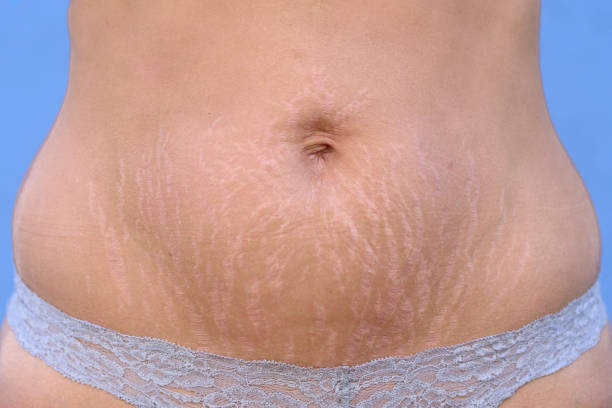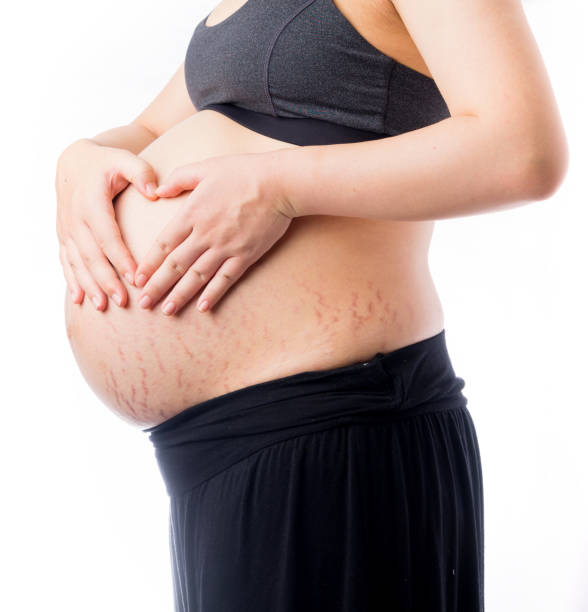In recent years, microneedling has taken the beauty industry by storm. This innovative procedure involves using tiny needles to create controlled micro-injuries on the skin’s surface, stimulating collagen production and rejuvenating the skin. While microneedling is widely known for its effectiveness in treating various skin concerns, there is one area in particular where it shines: under eye bags. In this article, we will explore how microneedling can be a game-changer for addressing under eye bags, providing you with a fresh and youthful appearance.
Understanding Under Eye Bags
Under eye bags are a common cosmetic concern that many people experience at some point in their lives. They refer to the puffiness or swelling that develops beneath the lower eyelids, resulting in a tired or aged appearance. Understanding the causes, symptoms, and treatment options for under-eye bags can help you address this issue effectively.

Causes
Aging: As we age, the skin around the eyes becomes thinner, and the muscles supporting the eyelids weaken. This can lead to fat deposits accumulating beneath the eyes, causing them to appear puffy.
Fluid retention: Certain lifestyle factors, such as lack of sleep, excessive alcohol consumption, or a high-sodium diet, can contribute to fluid retention, leading to under-eye swelling.
Allergies: Allergic reactions can cause inflammation and fluid buildup, resulting in puffy under eyes.
Genetics: Some individuals may be genetically predisposed to developing under-eye bags due to an inherited tendency for weakened skin elasticity or fat distribution.
Symptoms
- Swelling or puffiness beneath the eyes.
- The skin may appear darker or discolored.
- A tired or fatigued appearance.
- Fine lines or wrinkles around the eyes.
Traditional Remedies Fall Short
Treatment options can provide temporary relief:
Lifestyle changes: Getting sufficient sleep, managing stress levels, consuming a balanced diet, and reducing sodium intake can help minimize under-eye bags caused by fluid retention.
Home remedies: Applying cool compresses, cucumber slices, or chilled tea bags to the under-eye area can temporarily reduce puffiness and soothe the skin.
Topical creams: Over-the-counter creams containing ingredients like retinol, caffeine, or vitamin C can help improve the appearance of under-eye bags by tightening the skin and promoting collagen production.
Allergy management: If allergies are contributing to under-eye bags, identifying and avoiding allergens, or using antihistamines or nasal decongestants can help alleviate the symptoms.
Cosmetic procedures: In more severe cases, medical treatments such as dermal fillers, chemical peels, laser resurfacing, or blepharoplasty (eyelid surgery) may be considered. These procedures aim to reduce excess fat and tighten the skin around the eyes.

While there are numerous remedies and cosmetic products claiming to diminish under eye bags, many fall short of delivering noticeable results. Creams, serums, and even cold compresses offer temporary relief at best, but fail to address the root cause of the problem. This is where microneedling comes into play, offering a long-lasting solution that tackles the underlying issues and restores the natural beauty of your under-eye area.
The Science Behind Microneedling
Microneedling, also known as collagen induction therapy, is a minimally invasive cosmetic procedure that has gained popularity in recent years. It involves the use of small, fine needles to create controlled micro-injuries on the skin’s surface. While it may sound counterintuitive, these tiny punctures actually stimulate the skin’s natural healing processes, leading to various skin rejuvenation benefits.
The science behind microneedling lies in its ability to activate the body’s wound healing response and trigger the production of collagen and elastin, two essential proteins that maintain the skin’s strength, elasticity, and overall youthful appearance. When the skin is wounded, whether through accidental injury or intentional microneedling, the body initiates a complex cascade of cellular events to repair the damage.
During the microneedling process, the needles penetrate the outermost layer of the skin, called the epidermis, and reach the dermis, the deeper layer where collagen and elastin are produced. The micro-injuries created by the needles stimulate the release of growth factors and cytokines, which are signaling molecules that control cell behavior. These chemical signals attract immune cells to the wounded area, initiating an inflammatory response.
Inflammation is a crucial part of the skin’s healing process. It triggers a series of events that involve different types of cells, including fibroblasts, which are responsible for producing collagen and other extracellular matrix components. Fibroblasts migrate to the site of injury and start synthesizing new collagen fibers, while existing collagen and elastin strands undergo remodeling. This process results in a strengthening and restructuring of the skin tissue, leading to improved texture, firmness, and overall skin quality.
Additionally, microneedling promotes neovascularization, the formation of new blood vessels, which enhances blood flow to the treated area. Increased circulation brings more oxygen and nutrients to the skin cells, aiding in cellular regeneration and tissue repair. It also facilitates the removal of toxins and waste products, further improving the skin’s health and appearance.
The effects of microneedling can vary depending on the depth of needle penetration, the number of sessions, and individual skin characteristics. It is commonly used to improve the appearance of acne scars, fine lines and wrinkles, hyperpigmentation, stretch marks, and uneven skin texture. Microneedling can be performed using various devices, including derma rollers, derma pens, and automated microneedling pens, with adjustable needle lengths to accommodate different treatment areas and skin conditions.
Microneedling and Under Eye Bags
So, how does microneedling specifically target under eye bags? The micro-injuries created during the procedure trigger the body’s healing process, prompting the production of fresh collagen and elastin fibers. As a result, the skin in the under-eye area becomes firmer, plumper, and more resilient. The increased collagen levels improve skin laxity, reducing the appearance of puffiness and smoothing out fine lines and wrinkles. By addressing the root causes of under eye bags, microneedling provides a long-lasting solution that surpasses conventional treatments.
The Microneedling Process
Consultation: Before undergoing the procedure, it is essential to consult with a qualified dermatologist or aesthetician. They will assess your specific concerns, medical history, and determine if microneedling is suitable for you.
Numbing Cream: To minimize any discomfort, a numbing cream is applied to the treatment area approximately 30 minutes before the procedure.
Procedure: Once the area is sufficiently numb, the clinician will use a handheld device fitted with sterile needles to create controlled punctures along the under-eye region. The depth of the needles will be adjusted based on individual needs and desired outcomes.
Post-Treatment Care: After completing the microneedling session, your skincare professional will provide instructions on post-treatment care. This may include avoiding direct sunlight, using gentle cleansers, and applying moisturizers or serums to promote healing.

Benefits of Microneedling for Under Eye Bags
Boosts Collagen Production: By stimulating collagen synthesis, microneedling enhances the skin’s natural rejuvenation process, resulting in improved texture, firmness, and elasticity.
Reduces Fine Lines and Wrinkles: The increase in collagen levels can smooth out fine lines and wrinkles around the eyes, giving you a more youthful and refreshed look.
Improves Skin Texture: Microneedling helps to refine the skin’s texture, making it smoother, softer, and more even-toned.
Enhances Skincare Product Absorption: The microchannels created by microneedling allow skincare products to penetrate deeper into the skin, maximizing their effectiveness.
Minimal Downtime: Compared to more invasive procedures, microneedling has minimal downtime, allowing you to resume your daily activities shortly after the treatment.
Conclusion
In the ever-evolving world of skincare, microneedling has emerged as a revolutionary solution for combatting under eye bags. By stimulating collagen production and rejuvenating the delicate under-eye skin, microneedling offers a natural, effective, and long-lasting approach to diminish puffiness and restore a youthful appearance. With its minimal downtime, versatile nature, and impressive results, microneedling has become a go-to treatment for individuals seeking to bid farewell to under eye bags once and for all. Embrace the power of microneedling in 2023 and experience a transformative journey towards radiant and rejuvenated under-eye skin.
FAQs
- Is microneedling painful? Microneedling is generally well-tolerated, thanks to the application of numbing cream prior to the procedure. Yet, individual pain thresholds may vary, and some mild discomfort or sensitivity is possible during the treatment.
- How many sessions of microneedling are required to see results for under eye bags? The number of sessions required may vary depending on individual factors such as the severity of under eye bags and desired outcomes. Generally, a series of 3-6 sessions spaced 4-6 weeks apart is recommended for optimal results. Your skincare professional will evaluate your progress and adjust the treatment plan accordingly.
- Are there any side effects associated with microneedling for under eye bags? While microneedling is considered a safe procedure, some temporary side effects can occur. These may include redness, mild swelling, and slight sensitivity in the treated area.
- How long do the results of microneedling for under eye bags last? Microneedling provides long-term results by stimulating collagen production and improving skin quality. However, the aging process continues, and maintenance treatments may be necessary every 6-12 months to sustain the benefits.
- Who is a suitable candidate for microneedling for under eye bags? Microneedling is generally suitable for most individuals looking to address under eye bags.






